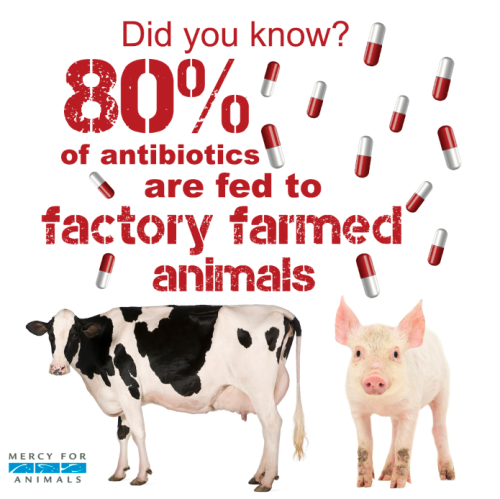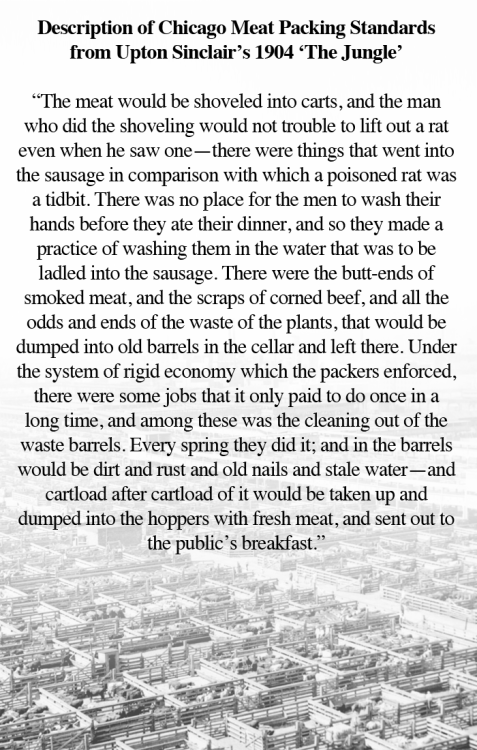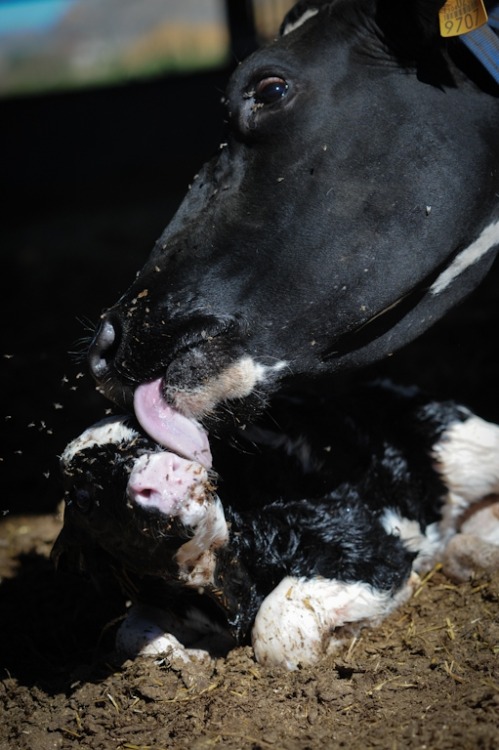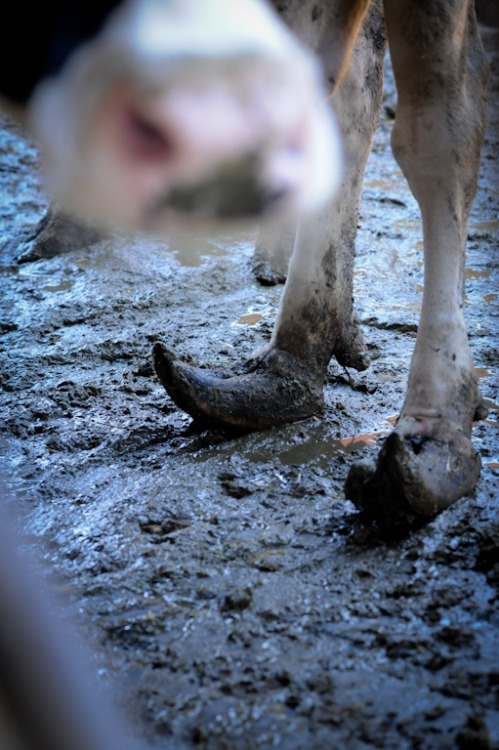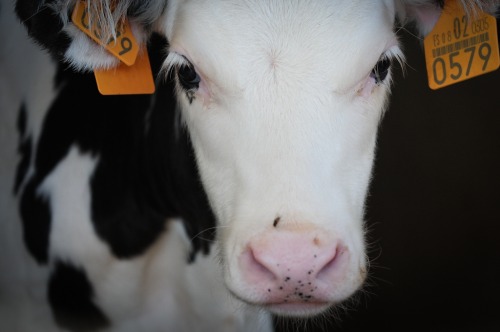#factory farming
Imho the idea of ‘cruelty free’ products or food shouldn’t mean that nothing died to create it, but rather that anything and anyone involved in the creation process hasn’t been exploited or harmed.
Leather is good actually. Veganism isn’t the end all be all to morality and consumption. The issue isn’t that a chicken died for those nuggets, but that while the chicken was alive, it’s life fucking sucked. Vegan chocolate means little if the cocoa that made it was gathered by child slave labor.
Factory farms, abuses of the people who pick the fruit and vegetables we eat, the focus profit and productivity over all else - that’s the fucking issue here. It’s capitalism folks.
Oops, someone dropped the truth.
10 Cruel Things Done to Farm Animals That No Sane Person Would Do to a Cat or Dog:
1. Cutting Their Tails Off
In order to prevent tails being mutilated or bitten off due to overcrowding in pens, tails are cut off shortly after birth, without anesthesia or pain killers.
2. Ripping Their Teeth Out
Piglets also have their teeth ripped out at the same time as they have their tails docked to prevent them from causing harm to each other when they’re confined in their tiny pens.
3. Locking Them in Cages Where They Cannot Turn Around
Factory farmed animals are often kept in cages where there is not even enough room to turn around, stretch their wings fully, or extend their legs.
4. Taking Away Their Babies Immediately After Birth
It’s standard practice to take calves away from their mothers within a day of birth, a process which causes immense emotional stress and deprives the newborn of its mother’s milk.
5. Forcing a Tube Down Their Throat
Geese in the foie gras industry are force fed huge volumes of corn slop through long metal tubes, giving them no choice but to consume it.
6. Stealing Their Milk
Cows produce milk to feed their own babies, yet in the dairy industry, they are hooked up to machines which steal the milk for human consumption instead.
7. Filling Them Full of Drugs to Make Them Grow Faster
Almost all farm animals on intensive farms are routinely fed drugs and antibiotics in order to make them grow much faster than nature intended. Chickens are forced to grow so big that many suffer from broken legs and joint troubles.
8. Branding or Tagging Them for Identification
One method of identifying cows and pigs is by branding them with a hot iron which causes considerable pain and discomfort. Another way of doing it, for sheep, goats, and sometimes cows, is by punching a tag through the ear, which is also very painful and can become infected.
9. Depriving Them of Sunlight
Locking animals away in darkness and depriving them of ever seeing the sunlight is an industry norm for many industrialized farms.
10. Slaughtering Them at a Young Age and Eating Their Dead Bodies
Farm animal lives are cut extremely short because as soon as they reach the desired size, or they become less productive milk producers or egg layers, they are sent to the slaughter for people to eat.
Even though society deems it acceptable to do every single one of these things on a regular basis to certain animals, if someone were to do them to a dog or a cat, they’d probably be arrested for animal cruelty.
The thought of cutting a dog’s tail off, ripping her teeth out, branding her instead of giving her a name, shoving her in a tiny cage for her entire life, making her have puppies and then taking them away, and continuing to milk her so that you can drink the milk, before finally killing her and making dinner with her carcass sounds pretty psychotic. Yet this is what happens to billions of farm animals every single year.
If the thought of doing this to a cat or dog makes you feel disgusted, then you should ask yourself — do you believe this is an acceptable way to treat any animal?
Hello my lovely humans, welcome back to what I like to call informal essays. Today brings together two very important topics to me, food and conservationism. This is going to be longer than my last post and is going to involve some sidetracking as well.
I came up with this topic while looking at all the spices I was using to make butter chicken for dinner tonight and wondering how much the price was going to go up when shit really hits the fan, if we could have such dishes like this again, etc. So, essentially my anxiety spiral led me to doing research and wanting to discuss the intersectionality of culinary arts, climate science, and farming. In our current state, beef reigns supreme in terms of climate change contribution, the most eaten meat in the world is actually chicken, which is significantly less harmful than beef or pork, and yet beef and pork have the greatest climate impact and are highly susceptible to diseases (poultry is as well, don’t get me wrong). In general animal farming is a big contributor to climate change, crop farming is as well…
Crop farming, which I talk about here, also emits a lot of fossil fuels, pesticides, herbicides, fungicides, and pollutes ground water, depletes soil, and flows downriver along with cow and pig manure, thus killing fish, crustaceans, marine reptiles, and mammals who live in or around the sea. This combination of disregard after disregard for natural ecosystems leads us into where we are now. The Midwest is on the cusp of desertification, there’s been no agriculture reform or sign of actual change, which is why we need to take it upon ourselves to start vertical farming, hydroponics, and soil-less farming on an industrial scale. Not only is it more efficient, it’s better for the environment in every possible aspect, even using less water and requiring very little usage of fertilizers, but how do you replace animal farming? Answer: You don’t, you just get rid of it, the least amount of impact out of any animal is the chicken, so it may be able to stay, but cows and pigs cannot be farmed en masse anymore, it’s dangerous for our environment and our health, so they must be used all at once, and composted (with the rich preferably). It sounds cruel, I know, but there aren’t many better options. Of course the meat and dairy industries will try to interfere like they always do, but we knew that would happen anyway.
Moral of the story, our modern agriculture industry is profit focused and not based around the health or well-being of us or our planet, causing both a rise in greenhouse gas emissions, water and land pollution, and is just generally bad for us in the dietary respect.
Anyway, that’s all for today babes. This has been @punkofsunshine have a good one and stay safe.
The sad thing about these chicken many of them do not make it out of the coops due to health reasons that are caused from lack of life.

Image found on Pinterest - no source.
Commercial layer hens have been genetically selected to lay a very high number of eggs and are therefore highly susceptible to poor bone strength and osteoporosis.

Osteoporosis is related to a nutritional imbalance, level of egg production, and the birds’ inability to move and keep their muscles and bones healthy.
The formation of eggshells requires the deposition of calcium. Since eggs are laid at a very high rate, this leads to a loss of bone calcium.
Osteoporosis is an end result of this process and is a widespread problem in commercial hens. It can result in an increased susceptibility to poor bone health and bone fractures.
With thanks to the HSPCA, Compassion in World Farming & Twyla Francois.
“Stolen Bones” with kind permission from Twyla Francois.
i have often come across posts that have been made in the name…
of humour or ‘cuteness" that absolutely do not reflect the truth behind the image.
The unforgetable sodden and muddy kitten in the rain snuggling up to someone’s boot was not saved from his misery by a caring photographer.

The new born calf is not being taken for a ride in a wheelbarrow as a"treat" nor is he “sleeping”.
It is because he is too weak and too young to walk on his own.
He is headed to a miserable and short life before he is killed for veal.

There is often an explanation that is beyond our immediate impression.
This is one of them. I found it on the site www.aroundpet.com under Humour.
The site is now up for sale.

save for the common cold, probably the most important coronavirus humans have had to deal with is the avian coronavirus, or the infectious bronchitis virus. spread primarily among the world’s 23 billion chickens, it has proven impossible to eradicate despite the economic losses it imposes on farmers. it is primarily fought not by changing the environment the broiler chicken grows up in, but by providing as many vaccines as is cost effective to limit possible losses. however, because the virus mutates so quickly, grows in a part of the body not commonly reached by antibodies (the upper respiratory tract), and can adopt a huge variety of protein spike formations, it can successfully evade vaccine coverage in a way that viruses that target other parts of the body cannot.
the broiler chicken is one of capitalism’s finest accomplishments. through intensive broiler rearing methods like the battery cage, over 65 billion are slaughtered and consumed each year. there are more broiler chickens on the planet at any given time than any other species. the environment it grows up in is deeply shaped by the requirements of capital, such that not only has its evolutionary profile changed more in the last hundred years than in the prior 10,000, but any aspect of its lifestyle that costs more than absolutely necessary has been completely wiped out. despite the over $17 billion yearly loss ($266 per thousand * 65 billion) from the continual spread of this coronavirus among chickens, it is simply more acceptable for capitalism to mitigate costs through vaccination rather than accept any improvement to the living standards of these chickens.

